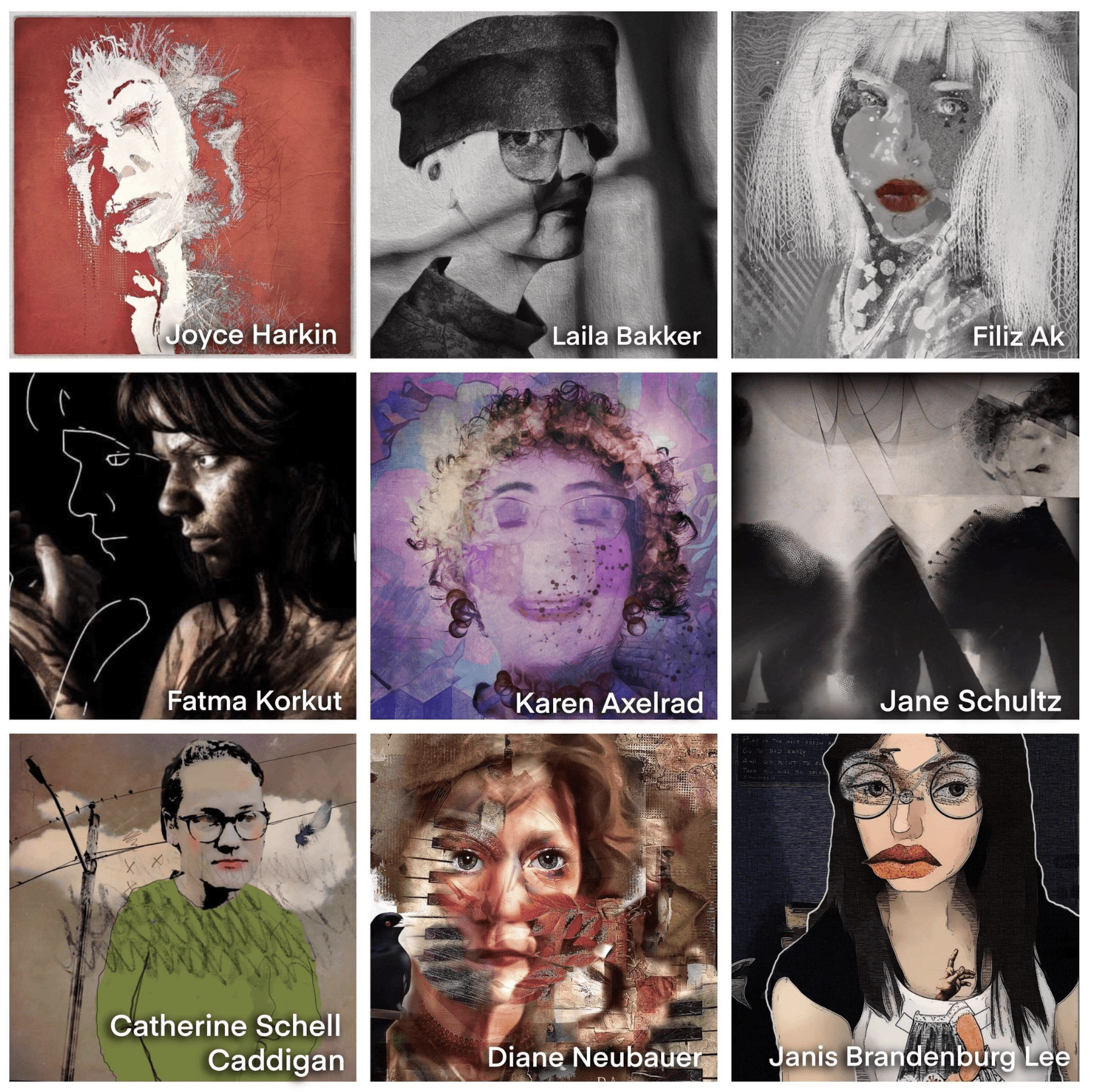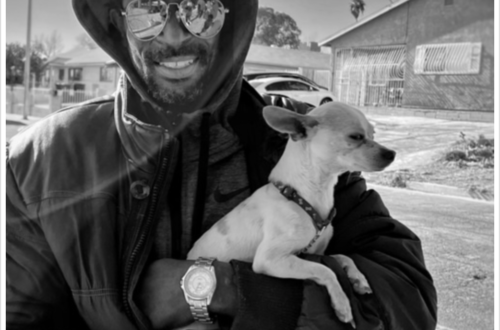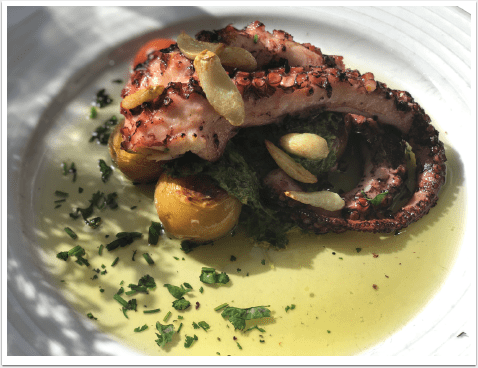Portrait of an Artist Interview with Rob DePaolo by Jennifer Bracewell
We are delighted to publish our fourth Portrait of an Artist interview to this very special column, edited by Jennifer Bracewell. This week Jennifer has interviewed Rob DePaolo and has created a really fabulous and interesting read with stunning imagery.
(We also have a dedicated Facebook group set up for this Column too – please join us here. Jennifer regularly adds and contributes to this. In addition we have set up a Flickr Group dedicated to this column. We would like you to send all your portraiture here and we will select images for curation and showcases as well as commentary – this is the Flickr Group link).
Don’t miss this fabulous interview, over to you Jen, (foreword by Joanne Carter)
“I am a big fan of Rob DePaolo’s work. He is a master of light and composition. His portraits range from surreal, scary, tinged with humor to ethereally beautiful and touching. He has a cohesive and beautiful body of work. His black and whites are perfection. Am I gushing? He’s very good. He’s also a kind and funny man and I’m honored that he took the time to answer a few questions for me. Here’s Rob!”…

‘Peer Pressure’ – ©Rob DePaolo – Apps used – KitCamera (iPhone 5s) Filterstorm Neue
J: What are your earliest memories of photography and/or art?
R: Wow. Tough question to start with. I have been drawn to photography and visual arts for as long as I can remember. If not working on my own art, I tend to be happiest when I am surrounded by the art of others whether it be in a small gallery, a major art museum, or simply immersed in a favorite book of photography.
Growing up as a kid in the late 70s and early 80s, I remember being fascinated with my parents’ old Kodak Instamatic cameras. Those were the ones that took the little plastic film cartridges and the disposable, pop-on flash bulbs. There was more mystery and “magic” to photography in those days due in part to the fact that you had to mail your film out to be processed. At best, you would have your prints back in about 3 weeks after taking the original shots if you mailed the film out right away. Compare that to today’s digital photography… 🙂
When we got our first Polaroid instant camera, my eyes really opened to the power of photography. Now I could take a photo and see the results in just moments (instead of weeks). It became far easier to try a shot, see the results, and re-shoot if you weren’t happy with it.
From there, I progressed to film SLRs in High School when I started taking photography classes. I then moved on to be a photo major in college for a couple of years before transferring to another school to major in Philosophy instead (long story…).

‘Whispering a Scream…” ©Rob DePaolo – Apps used – PureShot (iPhone 5s) and Filterstorm Neue
J: What have you sacrificed for your art?
R: My sanity! 🙂 Well, that is at least partly true, but it is a good thing actually. I find that art, and photography in particular, allows me to shed light on the darker corners of my mind to see what is lurking there and face it head-on. I often joke that all good artists are at least partly mad, but I honestly think that there is a measure of truth to that statement. By allowing myself to embrace the madness whenever it calls, I have been able to evolve as an artist. However, following such a path can make it difficult to maintain relationships with others that are not on the same path. I’ve always resisted the urge to conform, and while staying true to one’s self is good for one’s art, it can be a bit lonely at times… I’m very grateful for the growing online community of photographers and other artists that have been so supportive of my work. I have learned so much from others in the community, and my art would never have developed in the same manner if not for the support of others.

‘Toxic…’ ©Rob DePaolo – Apps used – PureShot (iPhone 5s) and Filterstorm Neue
J: What is it that appeals so much to you about portraiture?
R: Photos of inanimate objects can evoke feeling and emotion depending on the viewer, but for me, the odds of a strong emotional response are increased dramatically when a human subject is part of the image. I think that we tend to see a bit of ourselves in portraits of others. This doesn’t always happen on a conscious level, but it happens nonetheless.
I’m currently making an effort to work with more subjects/models to expand my range of portraiture. Working with family and self-portraits is great and gives me a high level of comfort for doing whatever I want, but I feel that in order to really grow as a portrait artist, I need to work with others.
J: Tell me about awards and recognition you’ve received
R: Just recently, one of my photos was selected as a finalist in the Shadow Stories: The Art of Mobile Black & White exhibition. It was shown digitally in NYC and will be on display in print at a Toronto gallery in June. I still pinch myself when I think about it. In addition, a few months ago, I was awarded honorable mentions for two of my images in the 2013 MPAs. I’ve also had work featured here on The App Whisperer, AMPt, www.JustBW.eu, WeAreJuxt, and other websites/groups.

‘Santana 2012…’ – ©Rob DePaolo – Native Camera (iPhone 4) and Filterstorm Neue
J: Which of your own images are you most proud of and why?
R: This may seem like a bit of a cop-out, but I would have to say that I am most proud of my portrait work in general. I’ve always been drawn to portraiture over all other forms of photography, so whenever I create a portrait that I am pleased with, it just makes me feel that much happier compared to any other sort of photograph.
Whenever I create an image that I feel truly satisfied with, regardless of whether others “like” it or not, I feel like I can do anything. That being said, if an image does resonate with others, it just adds icing to the cake.

‘The Return’ – ©Rob DePaolo – Apps used – PureShot (iPhone 5s) and Filterstorm Neue
J: What have been the high points and low points of your career so far?
R: It’s hard to pinpoint any real low points other than the typical frustration that comes from being in a creative rut from time to time. However, I try not to dwell on those moments.
For high points, making it into my first print exhibition as part for the Shadow Stories collection is a huge milestone for me as an artist. I also have a couple of exciting new opportunities in the works at the moment, but I really can’t elaborate just yet.
While recognition through awards and other accolades certainly represent high points of my career, I can honestly say that the pinnacle moments have simply been when a photo just comes together exactly as I had originally envisioned it. That feeling of pure accomplishment… The euphoria of creation… I really cherish those rare moments.
Oh, and being asked to do this interview is pretty cool too! 🙂

‘Gotcha’ – ©Rob DePaolo – Apps used – Pureshot (iPhone 5s) and Filterstorm Neue
J: What would you say the biggest myth is about mobile photography?
R: I would say that the biggest myth is that mobile photos can’t hold their own against DSLR and film. They are different tools for achieving different results. When it comes to painting, what is better? Oils, acrylics, or watercolors? It’s all about what you want to create.
If your primary concern is capturing the sharpest image possible, then you will need to use a high-end DSLR. However, good art isn’t typically about sharpness. In fact, good photography is often about spontaneity, and that is an area that mobile phones excel at compared to DSLRs. They each have their own advantages and drawbacks, and it shouldn’t be about which is better in a general sense, but which is better for helping us go from vision to creation. I use both myself, but in very different ways. For example, I’ve started to get back into infrared photography, and I need to use a DSLR for that. I also do some portrait work with a DSLR, but my more “artistic” portraiture is typically done with my iPhone.
In fact, I have been on a bit of a crusade lately to try and blur the lines between mobile and DSLR photography. I have begun to submit my mobile photos to websites and other groups that focus on DSLR work, and they have generally been well received so far. Someday soon, I think we will stop talking about mobile vs. DSLR and simply go back to discussing “photography”.
J: What/whose work of art would you most like to own?
R: Another tough question. There are so many artists that I admire. As of right now, I would say Duane Michals, Robert Mapplethorpe and/or Arnold Newman.

‘Silly’ – ©Rob DePaolo – Apps used – PureShot (iPhone 5s) and Filterstorm Neue
J: What song would work as the soundtrack to your life?
R: Ugh. I’m terrible at these sorts of questions. No matter what I pick, I’m going to wish I picked something else 5 minutes from now… Let’s go with Echoes by Pink Floyd.



8 Comments
gina costa
Rob-this is such a great interview-I love what you have to say, and the distinctions
you make between mobile photography and the use of a SLR or DSLR. I completely agree with you on this. Well articulated!
Very interesting work and technique btw!
Kudos
Joanne Carter
Thank you so much for your kind comment Gina, really good to get your feedback.
Rob DePaolo
Hi Gina! Thank you so much for your kind words! Sorry for the late reply. This week has been crazy…
Cheers!
Jeffrey Simpson
Yeah Rob way to go. Excellent interview. I am with you on the comparing of mobile and dslr. Well said.
Rob DePaolo
Thanks Jeff! 🙂
Tracy Mitchell Griggs
Sussinct message about distinctions in camera tools and outcomes. Oh yeah, nice photos too 🙂
Tracy Mitchell Griggs
Rob – do you use backdrops and light kits to create your portraits?
Rob DePaolo
Hi Tracy,
Thanks for your kind words. Yes–for my “studio” work, I have very simple backdrops (black muslin, etc.) and very simple steady lights with shoot-through umbrellas. It’s nothing high-end by any means, but it works very well for me. For the more low-key lighting, I sometimes just use a simple $14 gooseneck lamp from Ikea with no diffuser. Lighting is very important, but it need not be crazy expensive.
Cheers!